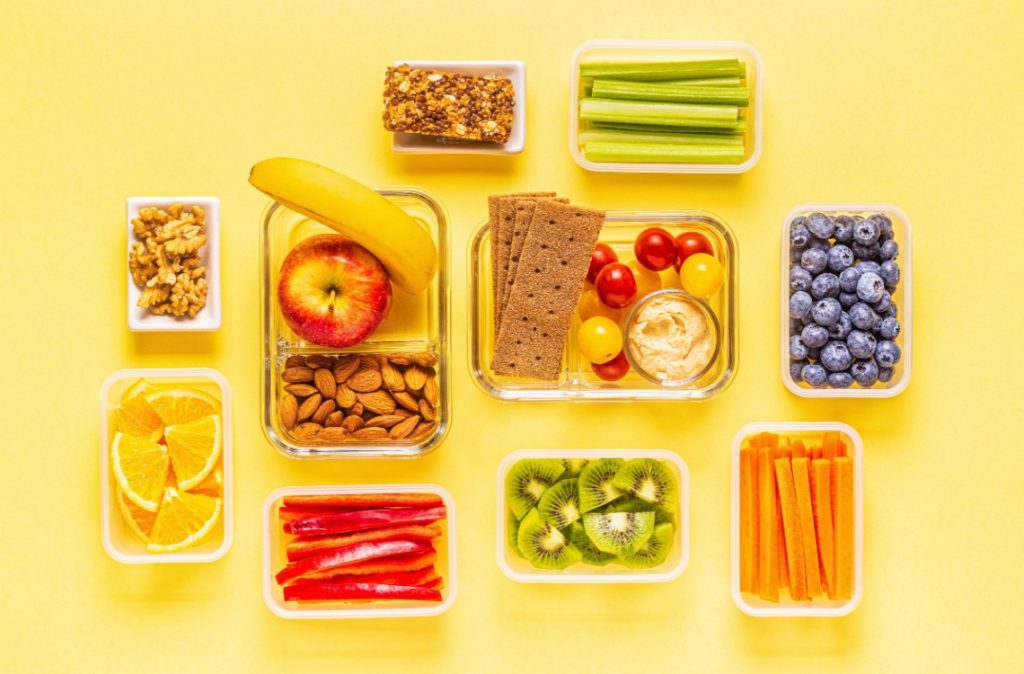From wheel crackers to iced gem biscuits, the nostalgic snacks of our Singaporean childhoods really bring back memories.
But in this day and age of health-conscious parents, teeth-aching ice pops and teeth-breaking White Rabbit candy aren’t exactly ideal afternoon snacks.
These ultra-processed junk food are full of sugar, trans fats and ‘empty calories’. Eating too much might not be good for your little one’s health.
After all, snacking is 100% natural, especially even more so for kids. They’re not just a quick fix for those pesky hunger pangs.
Facts on Snacks, According to Science
We may think that snacking is a relatively new phenomenon, invented by the food industry to push products into the market.
But according to health psychologist Janet Tomiyama, our snacking habits have prehistoric roots. Back during our hunter-gatherer days, snacking was a way to rapidly replenish calories in case of fight-or-flight situations.
Perhaps those instincts have persisted in recent times, manifesting instead in the desire for quick bites and stolen treats.
One could even argue snacking was the norm before the English established the idea of ‘three meals a day’, which may or may not necessarily align with a growing child’s fluctuating appetite.
That said, when it comes to kids, snacking may be a necessity rather than an indulgence.
According to studies, children burn through the calories much faster than adults, especially when going through those growth spurts. Is it no wonder why they love snacking so much.
Moreover, snacking could be thought of as supplementary eating to bulk up nutrients that you may not be getting enough of from your regular three meals a day.
That’s why incorporating healthy foods like fruits, vegetables and nuts into your child’s snacking smorgasbord can be very beneficial for supporting their physical and cognitive development.
While it’s important to allow room for fun, it’s also good to swap out those unhealthy snacks for healthier ones.
Here are some Mamahood-approved recommendations.
Snack-tastic Solutions for a Healthier Childhood
Parfaits
This fancy French dessert incorporates fruits and whipped cream into a sort of trifle pudding situation.
Making it does include a bunch of complicated steps involving egg yolks and cream, but we’re not going for authenticity here.
When it comes to healthy snacking, parfaits are more of a concept than a recipe. And the 10-minute version is as easy as pie.
Simply layer yoghurt in between berries and nuts in a glass and enjoy as is. Traditionally, parfaits are made with peaches, blueberries and strawberries but other fruits can be substituted. Bananas, mangoes, pineapple, you name it.
Use unsalted nuts like cashews, pumpkin seeds, almonds, walnuts, and pistachios.
Instead of regular yoghurt, use Greek yoghurt which has about twice the amount of protein, and half the amount of sugar.
But if you’re looking to bulk up your child’s calcium, opt for regular unsweetened yogurt.
Charcuterie Boards
While we’re on the topic of French cuisine, look no further than the charcuterie board as the next inspiration for your child’s snacking experience.
One of the main stars of a charcuterie board is cheese, which has many wonderful benefits for your child.
Aside from being nutritious and filling snacks, studies show that cheese contains a whole cocktail of nutrients like calcium, phosphorus, and magnesium, as well as vitamin A, K2, B2, B12, and folate.
Cheese is also a rich source of protein. Good choices of cheese include, feta, ricotta, cottage cheese, parmesan, mozzarella and cheddar.
Other accouterments that you can add to your child’s cheese platter can be, of course, fruits (typically grapes), nuts, and crackers.
For deli meats, opt for turkey, chicken or roast beef instead of salami, bologna, pepperoni and pastrami. These are known to be more processed and contain a lot of sodium.
Cracker Sandwiches
The humble cracker doesn’t get enough credit. It’s not just for morning sickness, you know. When paired with the right fillings (or toppings), they can be a delicious healthy snack for your kids.
But it’s important to use the right kind of accompaniments to ensure utmost nutrition. Due to their relatively mild taste, crackers go well with both sweet and savoury preparations.
Where you can really let your imagination go wild is with the variety of protein options available. Cooked tuna and sardines are great as fillings. Don’t underestimate fatty fish, they’re absolutely packed with omega 3, iron and vitamin D.
Cheese slices also go great with crackers. Paired with a fruit jam or eaten as is, the choices are limitless.
Healthy Snacking Is Possible
Snacking is great for when you (and your kids) are not in the mood to sit down for a full-blown meal.
They help get rid of those hunger pangs and also provide a quick way to replenish and supplement important nutrients.
But more than that, they teach children that healthy foods can be full of delicious flavours and endless possibilities.
So, embrace the concept of healthy snacking with your little ones – it may just set them up for a lifetime of healthy eating and even healthier living.
Disclaimer: The information provided in this article is for informational purposes only and should not be considered as medical advice from Motherhood. For any health-related concerns, it is advisable to consult with a qualified healthcare professional or medical practitioner.
For more insightful stories and parenting advice, stay tuned to Mamahood.com.sg!
